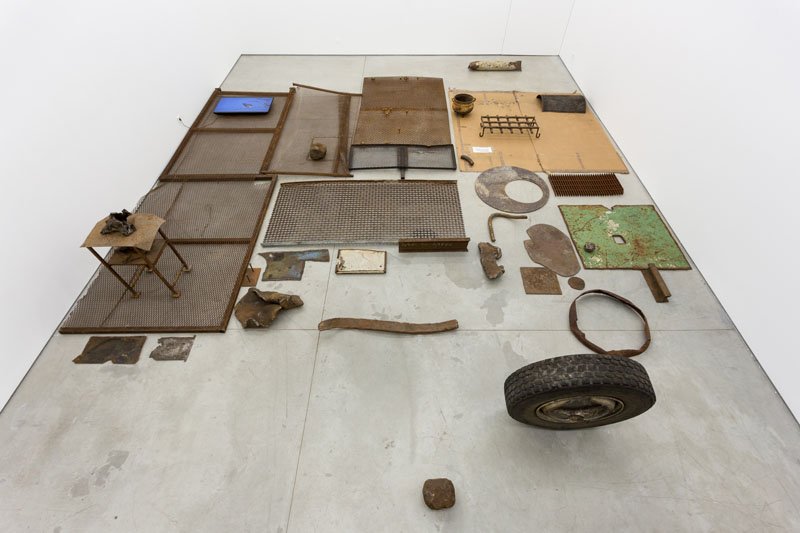
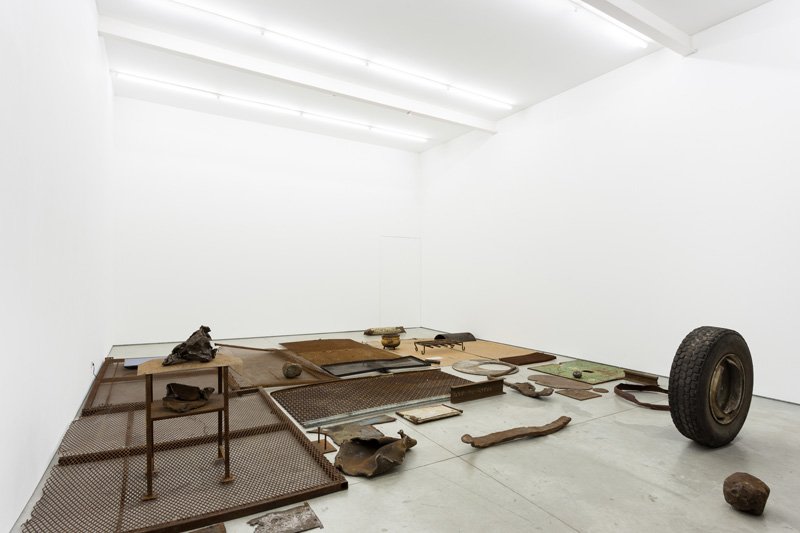
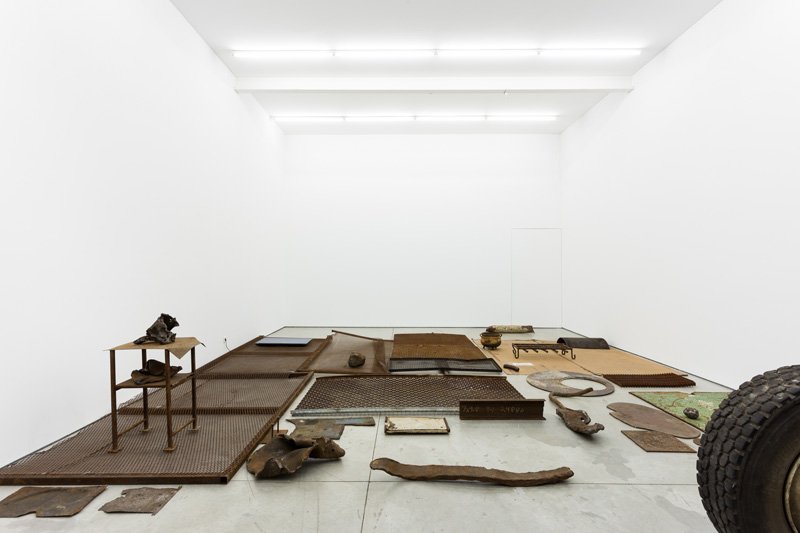
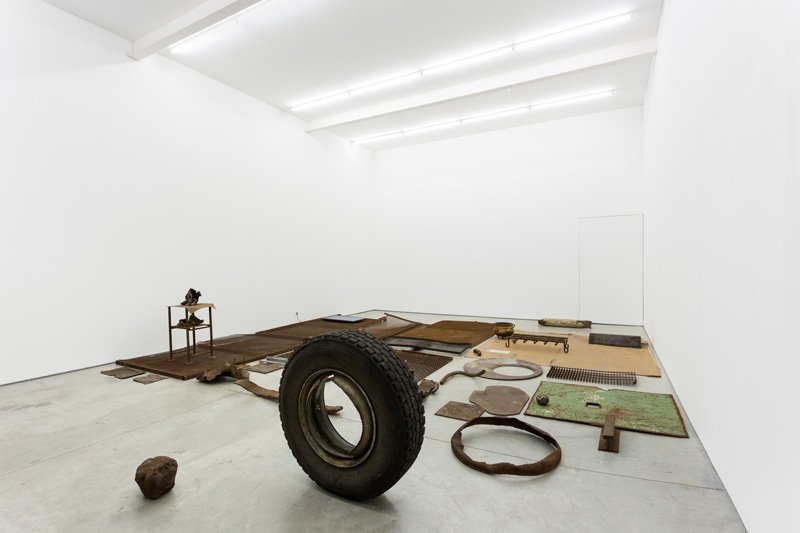



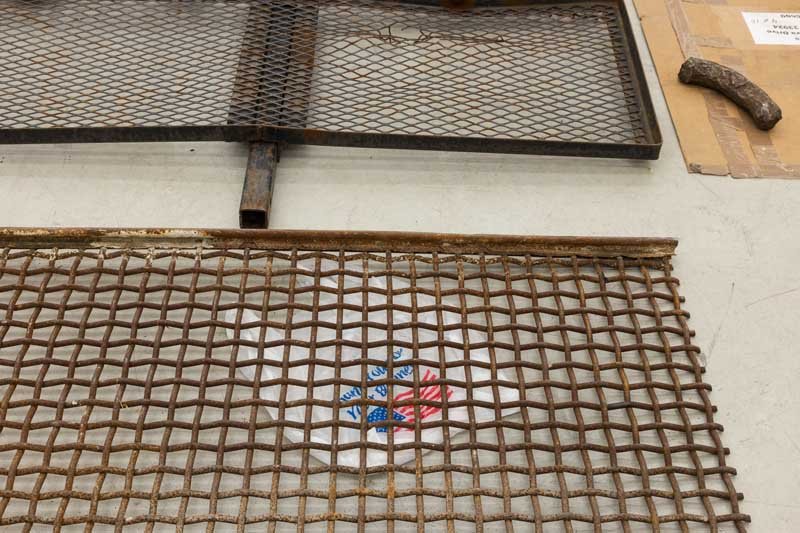





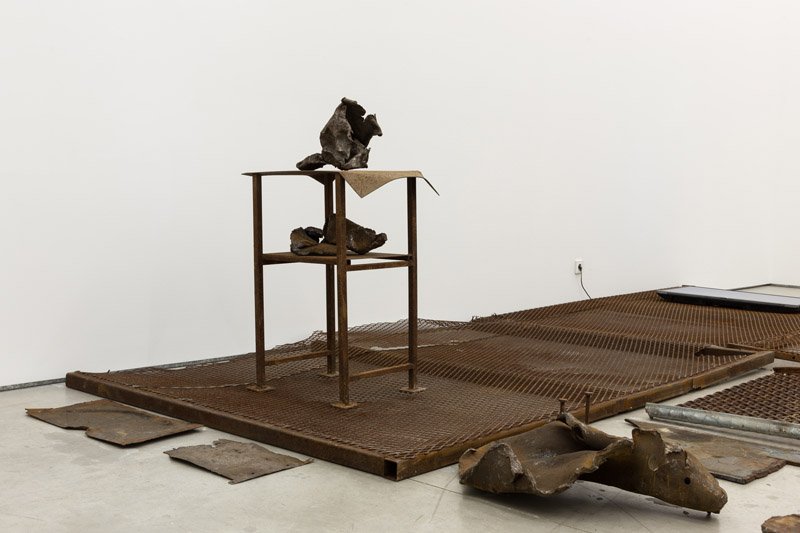
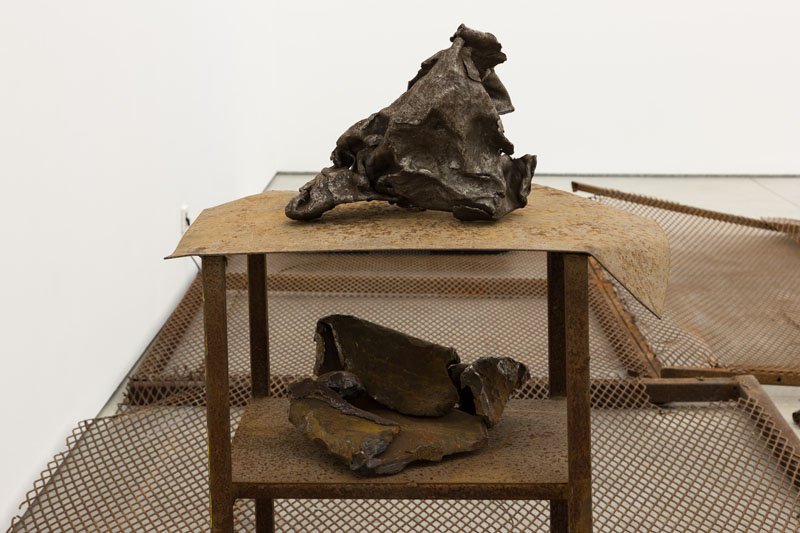
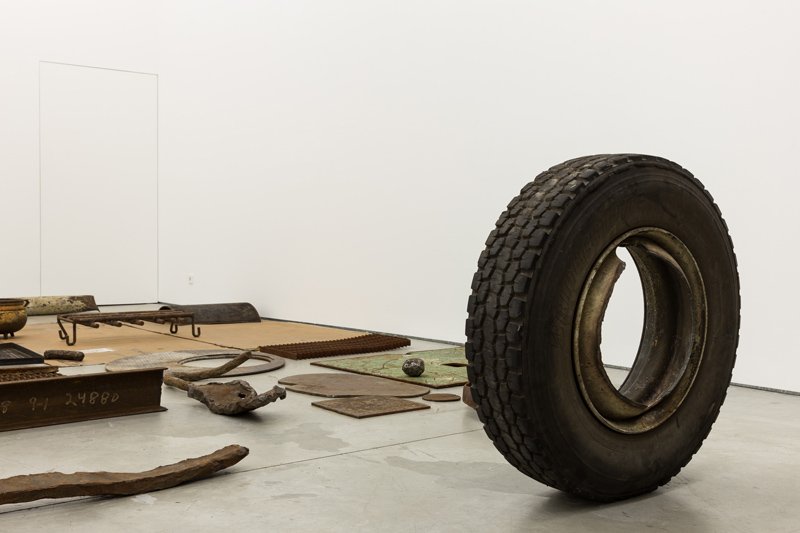
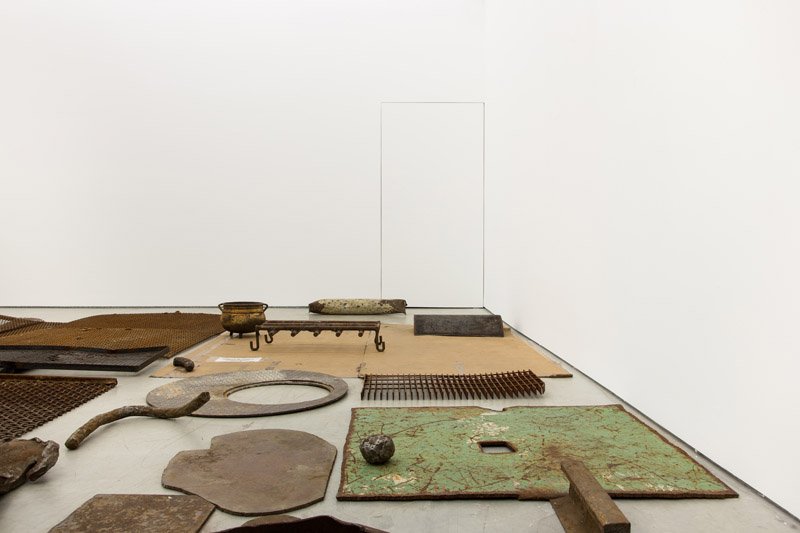
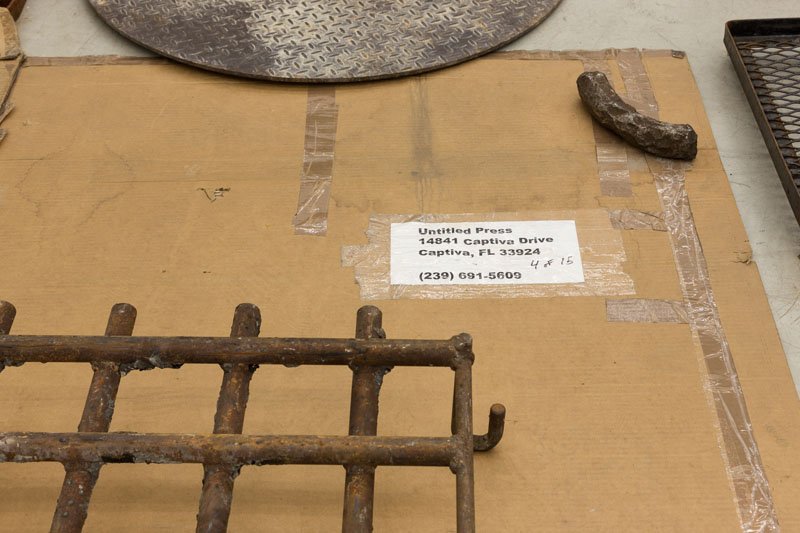
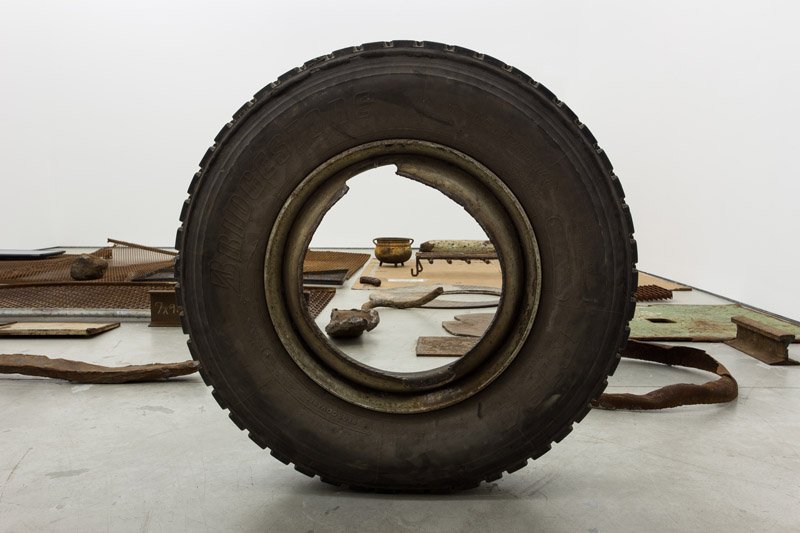
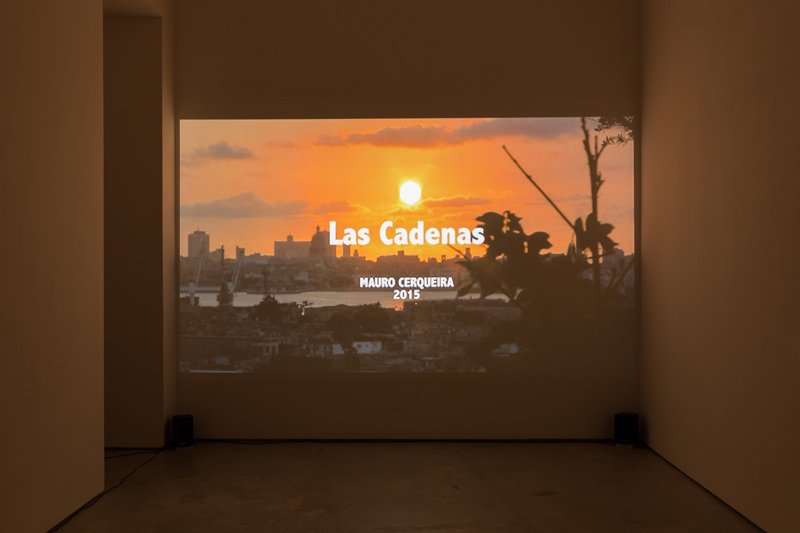


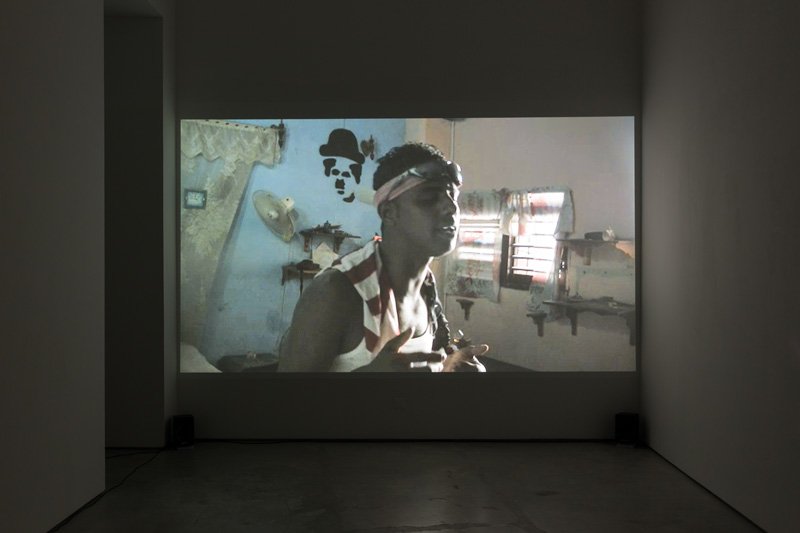
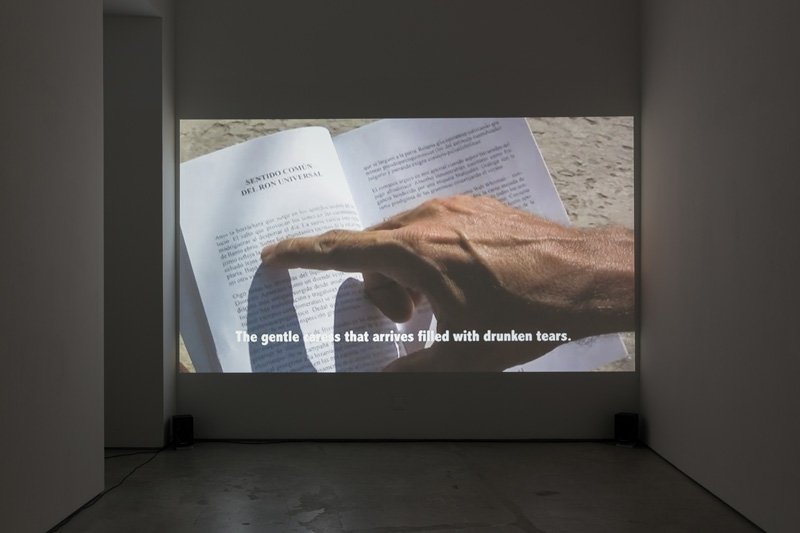
Galeria Múrias Centeno, Lisboa, 2015
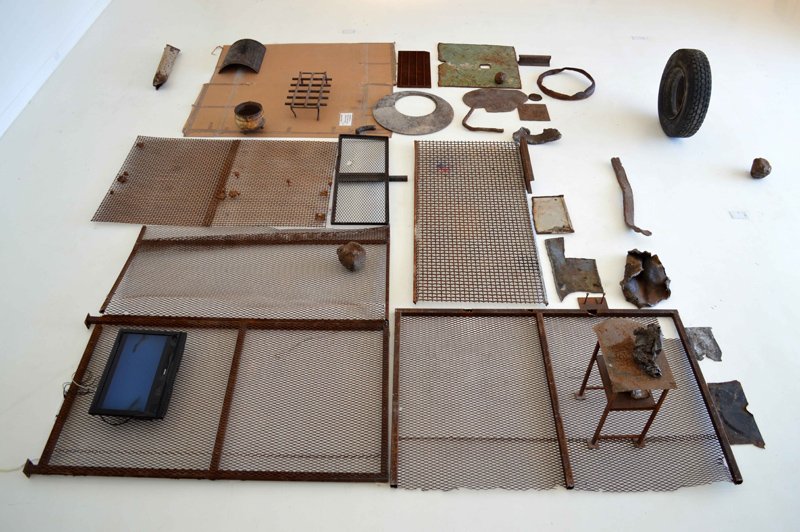
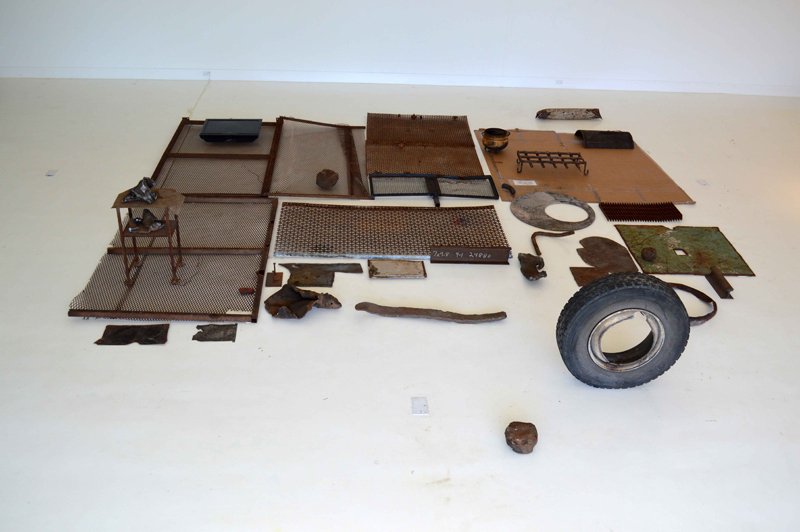
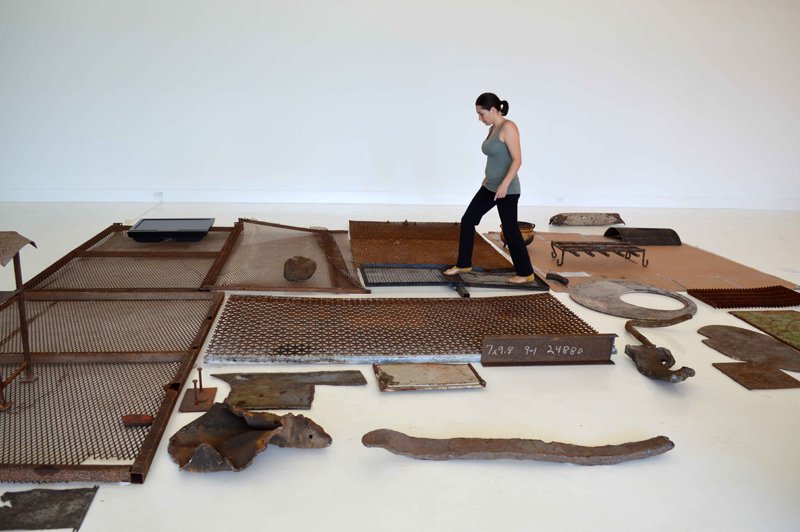
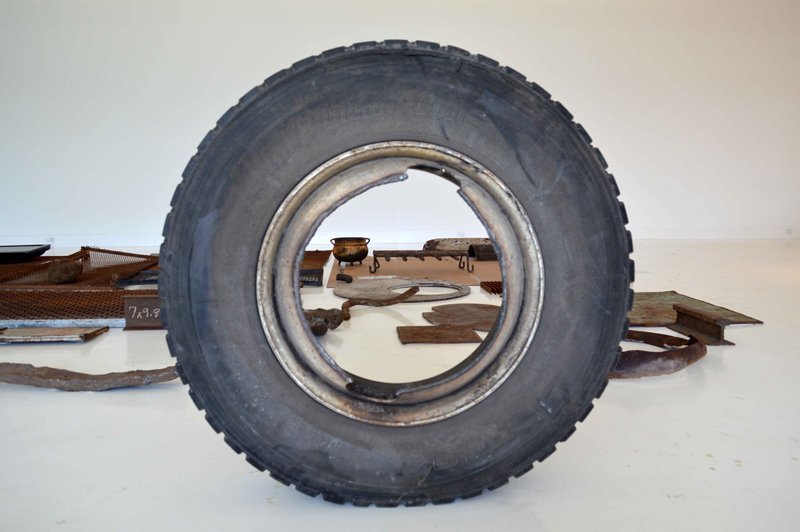
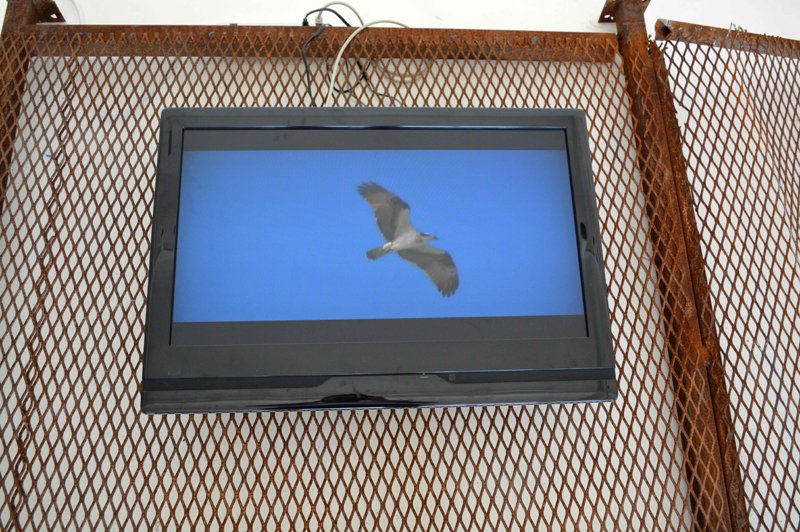
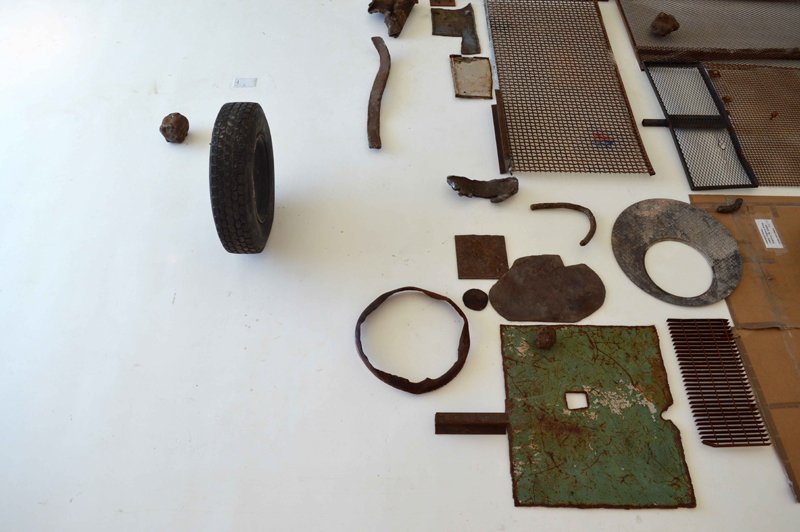
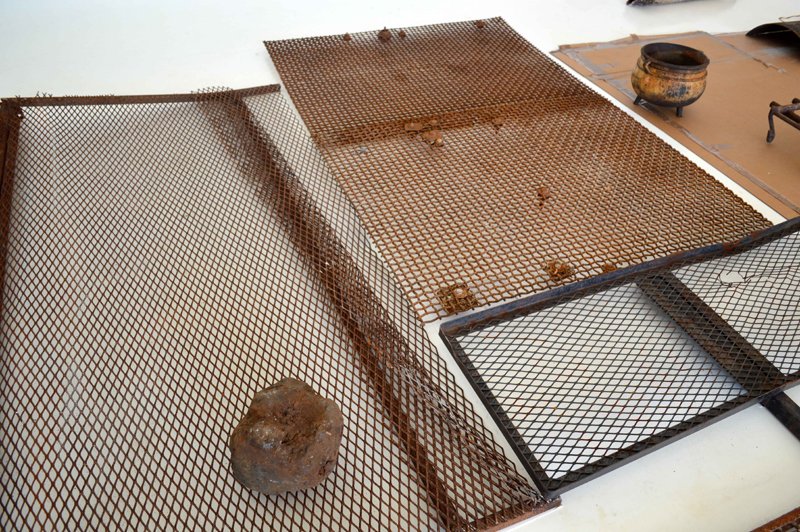
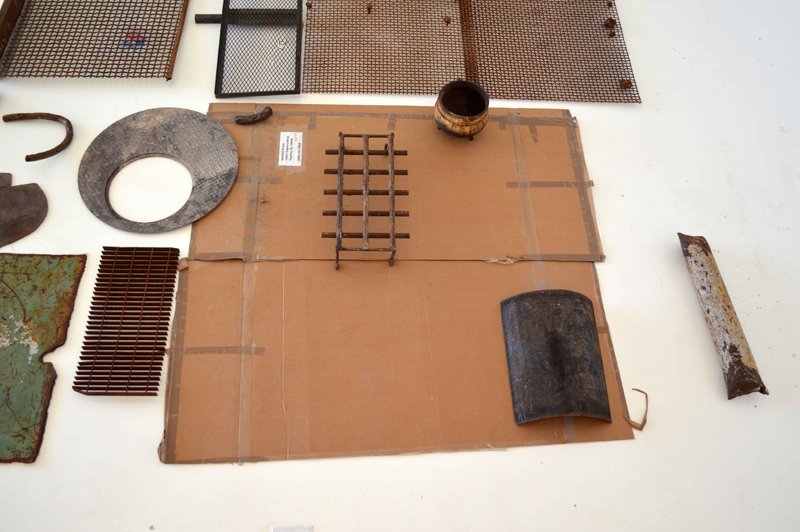
Rauschenberg Residency, 2013
Captiva Island, Florida, U.S
___________________________________________
The Chains - Las Cadenas
An Essay on Freedom and Ruins ?
Two islands divided by the gulf of mexico and the straits of Florida - so close and yet so far. Invisible chains, however present and attached on both sides. The sun glistening on the surface of imagination. We might think of white sand and crystal blue water washing out its stranded goods.
During his residency at Rauschenberg Foundation (Captiva Island, Florida, 2013), Mauro created the floor installation named Uma Certa America. The title as well as the work itself call various associations into mind. The materials for the installation were mostly sourced in situ at a nearby scrapyard. Rusty grids and metal pieces, generously laid out on the floor reminding of horizontal fences, ruptured by a flat piece of cardboard – seemingly nescient relating to Cardboard Series (1971-72) by Robert Rauschenberg. Looking through the upright wheel, one might even wonder where the goat has gone1. However Mauro's subtle attempts to pay deference to Robert Rauschenberg and his work do not in the least restrain further interpretations to unfold.
“Thank you for your business”, written on a plastic bag, appears like a gesture underneath one of the grids, inviting us to recollect the absurdity of everyday life in the U.S. - you get what you pay for. Be it education, health insurance, a car, a house...in either case, the banks are more than willing to help you get what you are made to need. Though we learned that the bubble, caused by this readiness to give out loans, can easily burst and the result of this we are able to experience (not just) within the borders of the United States. Mauro's installation, by allowing the viewer to walk on it, appears to retrieve and underline this awareness – as if walking cautiously on the remaining fragments of a ruin. A monitor lying on one of the rusty grids. You are looking down to watch a bird of prey flying in a crystal blue sky as if mirrored. How free this bird appears to be and isn't the notion of freedom an alternating and everlasting image with which the United States are trying to present themselves to the rest of the world? One part of the United States (or rather occupied territory) however got specifically infamous for demonstrating the contrary: Guantanamo Bay. Imprisonment under the flagship of freedom?
Cuba, May 2015. Visiting the remains of the House of Chains, Casa de las Cadenas, to which in the past one could reach out to be liberated from slavery - by touching the chains that were attached around the building. Freedom - a word so easily pronounced, yet its meaning only truly understood by those who experienced its loss. The freedom and privilege to cross borders, to leave an island, travelling across the vast ocean, reaching an unknown land.
The boat, a significant instrument of economic development, carries all those dreams or not. From one land to another. We learn that also sugar can leave a bitter aftertaste, even centuries later - not so sweet.
El negro junto al cañaveral. El yanqui sobre el cañaveral. La tierra bajo el cañaveral. ¡Sangre que se nos va!2 The Black Man bound to the cane field. The Yankee above the cane field. The earth beneath the cane field. Blood seeps out of us!
Casa de las Cadenas at the present time: its liberating chains removed a long time ago and its ruins transformed into living spaces. Improvisation is key when living within the walls of a house without a roof. Ruins of history. Historical ruins. The certitude that nothing will remain, except for some stones and rusty iron structures. Someday it may be forgotten what these structures stood for - life goes on, has to. When surviving the present becomes more important then preserving the past. However art can function as a document of such fragile moments.
Meanwhile playing dominoes, in a place where once theatre plays have been staged in front of an audience. A building named after one of the most significant figures of Cuban culture - José Martí. Common sense to be found in rum while thinking and talking of internationalism. Is this how life looks in a permanent revolution? Precarious future awaiting those who have faith. Faith in Cuba, faith in freedom, even faith in Obama - anything could be better than this, one might think.
On August 14th I arrive at JFK airport, with a recent Cuban stamp in my passport which since only recently is not an issue anymore. I see the news on all the screens: For the first time in 54 years, the U.S. Flag is flying at the American embassy in Havana. Welcome to America! At this point I understand what Cornel West meant when he said: “I cannot be an optimist but I am a prisoner of hope”. Let's hope then.
1 Referring to Monogram (1955-59), a work that belongs to the series Combines (1954-64) by Robert Rauschenberg
2 Caña, Nicolás Guillén